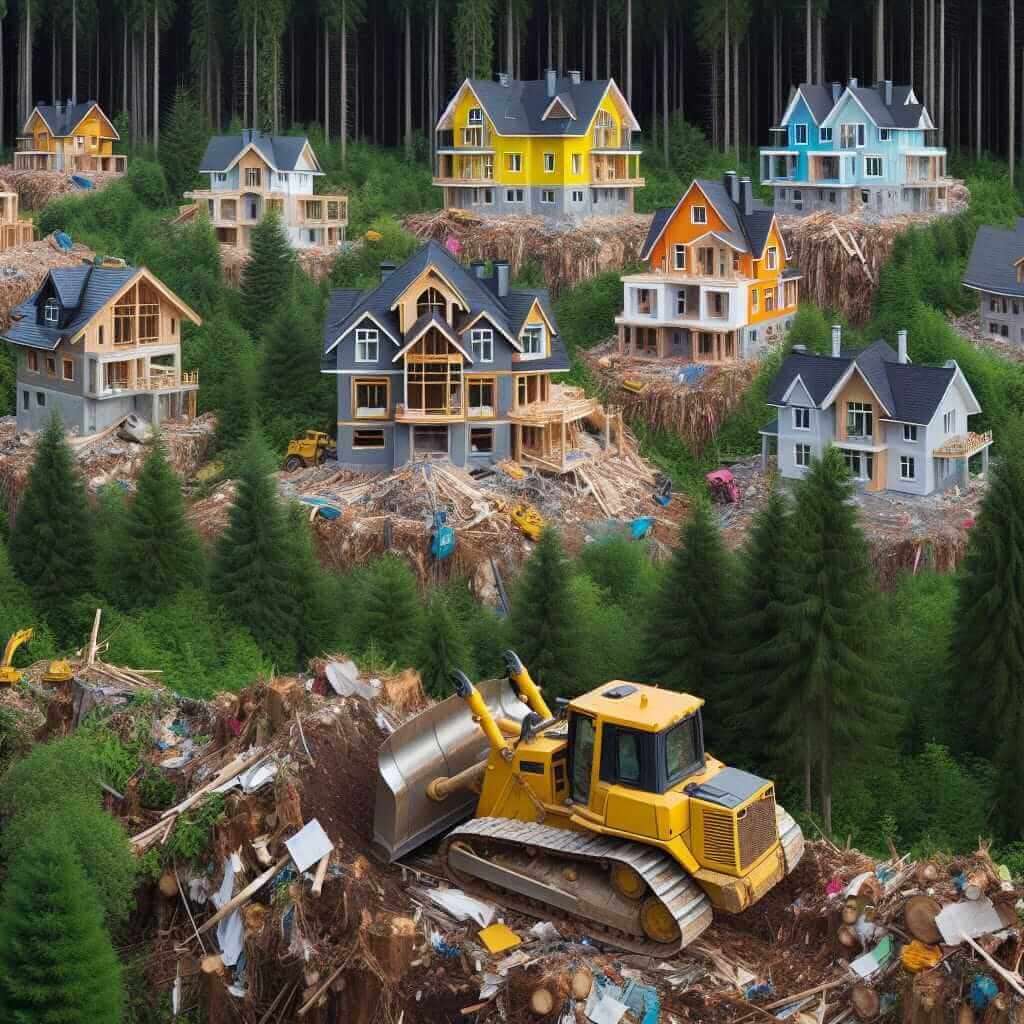The IELTS Reading test is a crucial part of the IELTS examination. It assesses your ability to understand and process written English effectively. A common topic that has appeared frequently in IELTS Reading exams is the impact of urban sprawl on local ecosystems. This topic is relevant and timely, given the global trend of increasing urbanization. Understanding this subject not only prepares you for the reading test but also broadens your knowledge on a topic of significant environmental importance.
In this article, we will provide a detailed IELTS Reading practice test on the topic “How does urban sprawl affect local ecosystems?” We will also offer in-depth answers, vocabulary explanations, and grammatical analyses to help you prepare effectively for the IELTS Reading test.
Reading Passage
Urban Sprawl and Local Ecosystems
Urban sprawl refers to the uncontrolled expansion of urban areas into the surrounding countryside. This phenomenon is driven by increasing populations and the desire for suburban living. While it provides benefits such as more housing and better living conditions for some, it has significant environmental repercussions.
One of the primary effects of urban sprawl is habitat destruction. As cities expand, natural habitats are cleared to make way for new housing, roads, and commercial areas. This results in the loss of biodiversity, as plants and animals lose their natural homes. Many species become endangered or extinct due to the destruction of their habitats.

Pollution is another critical consequence. Increased construction and vehicular traffic lead to higher levels of air, water, and soil pollution. Chemical runoff from new developments contaminates local water bodies, affecting aquatic life and making water unsafe for human consumption. Additionally, the heat island effect, where urban areas become significantly warmer than their rural surroundings, further exacerbates environmental stress on local ecosystems.
Urban sprawl also disrupts natural water cycles. Impermeable surfaces like roads and pavements reduce the infiltration of rainwater into the soil, leading to increased surface runoff and the risk of flooding. This disrupts local watersheds and can lead to severe erosion and sedimentation in rivers and streams.
Furthermore, urban sprawl contributes to climate change. The increased need for transportation and energy consumption in sprawling urban areas results in higher greenhouse gas emissions. These emissions contribute to global warming, which has far-reaching impacts on both local and global ecosystems.
In conclusion, while urban sprawl may provide certain socio-economic benefits, its impact on local ecosystems is predominantly negative. The loss of natural habitats, increased pollution, disruption of natural water cycles, and contribution to climate change are significant issues that need to be managed carefully to ensure sustainable development.
Questions
Identifying Information (True/False/Not Given)
- Urban sprawl results exclusively in socio-economic benefits without any negative consequences.
- Habitat destruction due to urban sprawl leads to a decrease in biodiversity.
- The heat island effect causes urban areas to be cooler than their rural surroundings.
- Urban sprawl helps in reducing local pollution levels.
- Increased surface runoff caused by urban sprawl can lead to flooding.
Matching Information
Match each statement with the correct paragraph:
A. The effect of urban sprawl on natural water cycles.
B. Contribution of urban sprawl to climate change.
C. Habitat destruction and its consequences.
D. The socio-economic benefits of urban sprawl.
E. Increased pollution due to urban sprawl.
- Paragraph 2
- Paragraph 3
- Paragraph 4
- Paragraph 5
- Paragraph 6
Answer Key
Identifying Information (True/False/Not Given)
- False – Urban sprawl results in both benefits and negative consequences.
- True – Habitat destruction leads to a decrease in biodiversity.
- False – The heat island effect causes urban areas to be warmer.
- False – Urban sprawl increases local pollution levels.
- True – Surface runoff caused by urban sprawl can lead to flooding.
Matching Information
- D – The socio-economic benefits of urban sprawl.
- C – Habitat destruction and its consequences.
- E – Increased pollution due to urban sprawl.
- A – The effect of urban sprawl on natural water cycles.
- B – Contribution of urban sprawl to climate change.
Common Mistakes
- Misinterpreting the Details: It’s essential to carefully read the passage to distinguish between facts and opinions.
- Vocabulary Trap: Sometimes, similar-sounding words can confuse test-takers. For instance, understanding the difference between ‘reduce’ and ‘increase’ in context is crucial.
- Generalizing Statements: Avoid assuming that one aspect of the topic covers all areas. Urban sprawl affects various environmental aspects differently.
Vocabulary
- Urban Sprawl (n): /ˈɜːrbən sprɔːl/ – The uncontrolled expansion of urban areas.
- Biodiversity (n): /ˌbaɪəʊdaɪˈvɜːrsəti/ – The variety of plant and animal life in a particular habitat.
- Pollution (n): /pəˈluːʃn/ – The presence or introduction of harmful substances into the environment.
- Heat Island Effect (n): /hiːt ˈaɪlənd ɪˈfɛkt/ – Urban areas becoming significantly warmer than rural areas.
- Erosion (n): /ɪˈrəʊʒn/ – The process of eroding or being eroded by wind, water, or other natural agents.
Grammar
Passive Voice
The passage utilizes a lot of passive voice to emphasize the effect of actions rather than who is performing the actions.
- Form: [Object] + [form of “to be”] + [past participle of main verb]
- Example from the passage: “Many species become endangered or extinct due to the destruction of their habitats.”
Advice for a High Reading Score
- Practice Regularly: Do regular practice tests to familiarize yourself with different topics and question types.
- Focus on Time Management: The IELTS Reading test is time-bound. Practice managing your time efficiently.
- Enhance Vocabulary: Expanding your vocabulary will help you understand the reading passages better and answer questions more accurately.
- Develop Skimming and Scanning Techniques: These techniques will help you find information quickly within the text.
- Understand the Question Types: Being clear about different question types will help you approach them correctly.